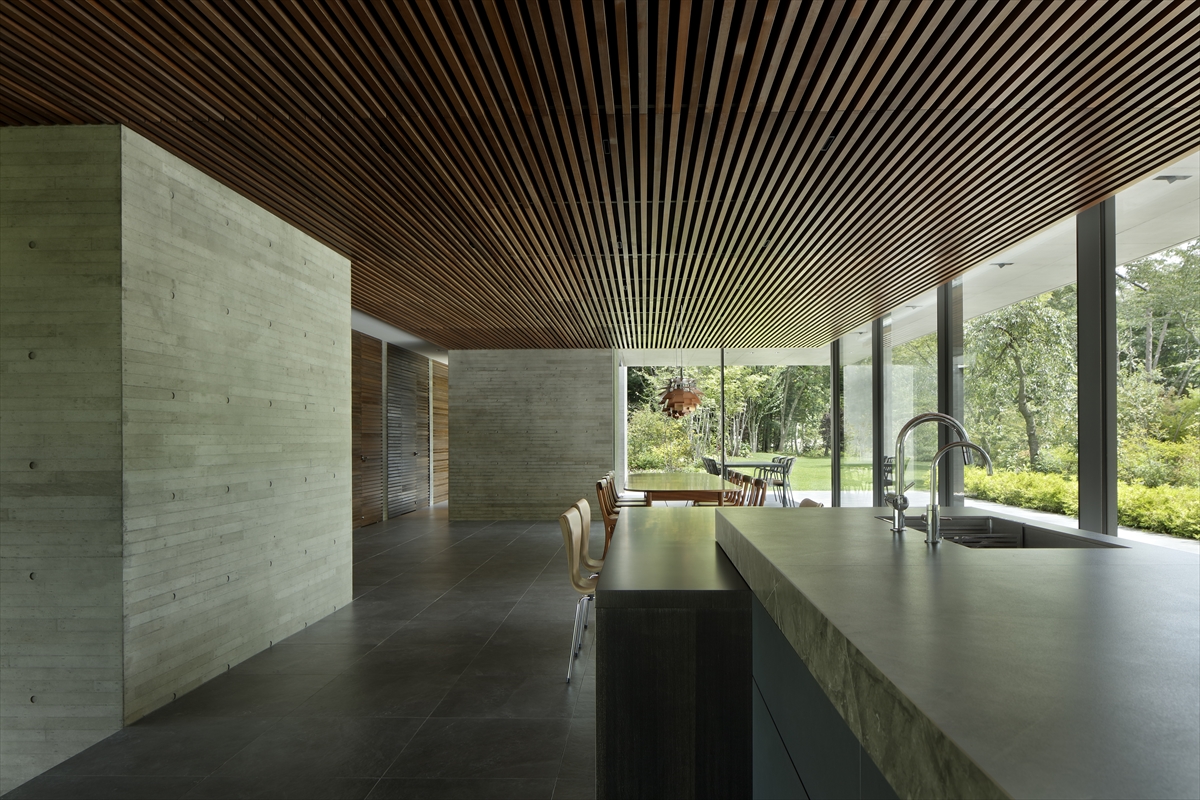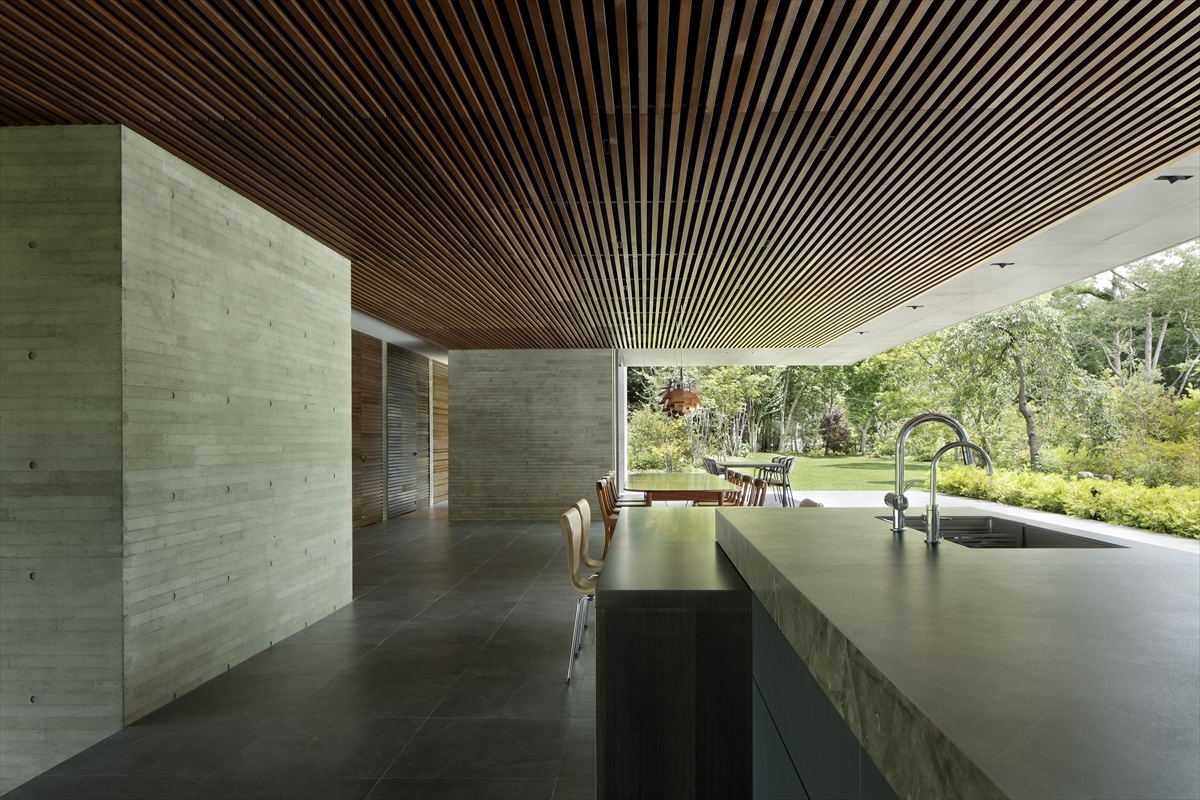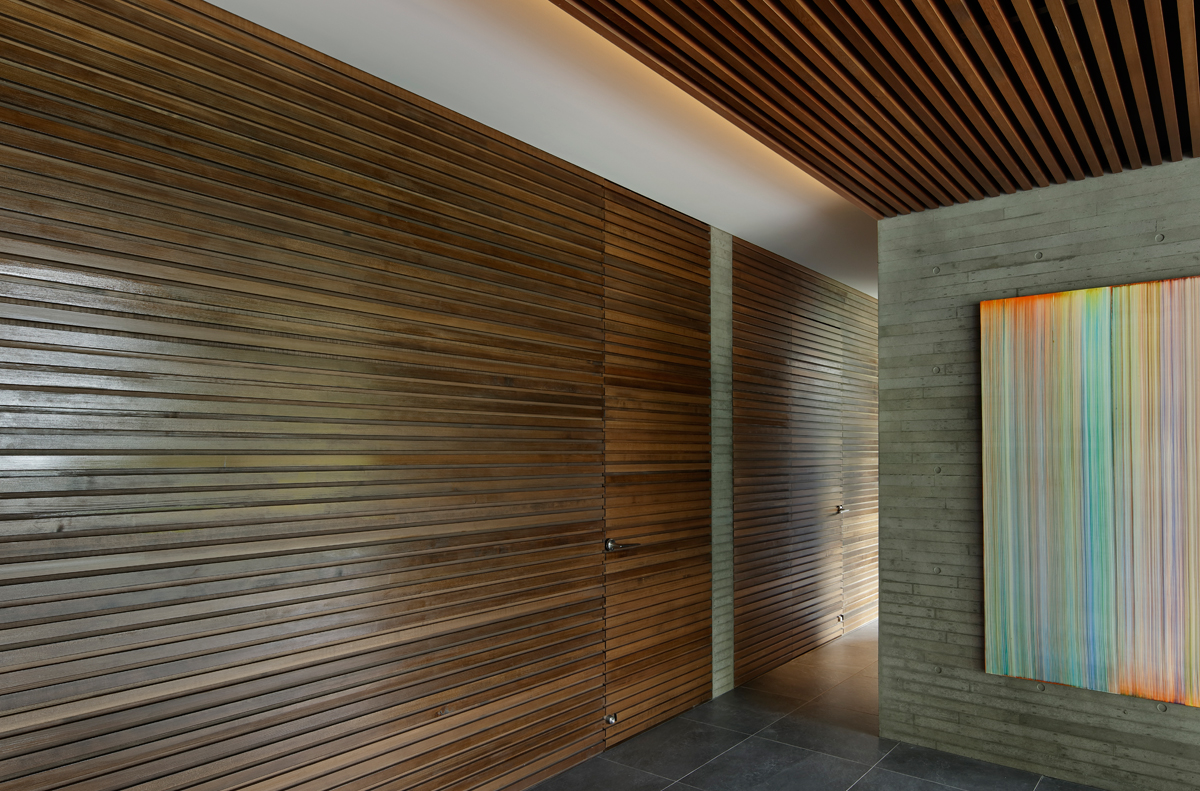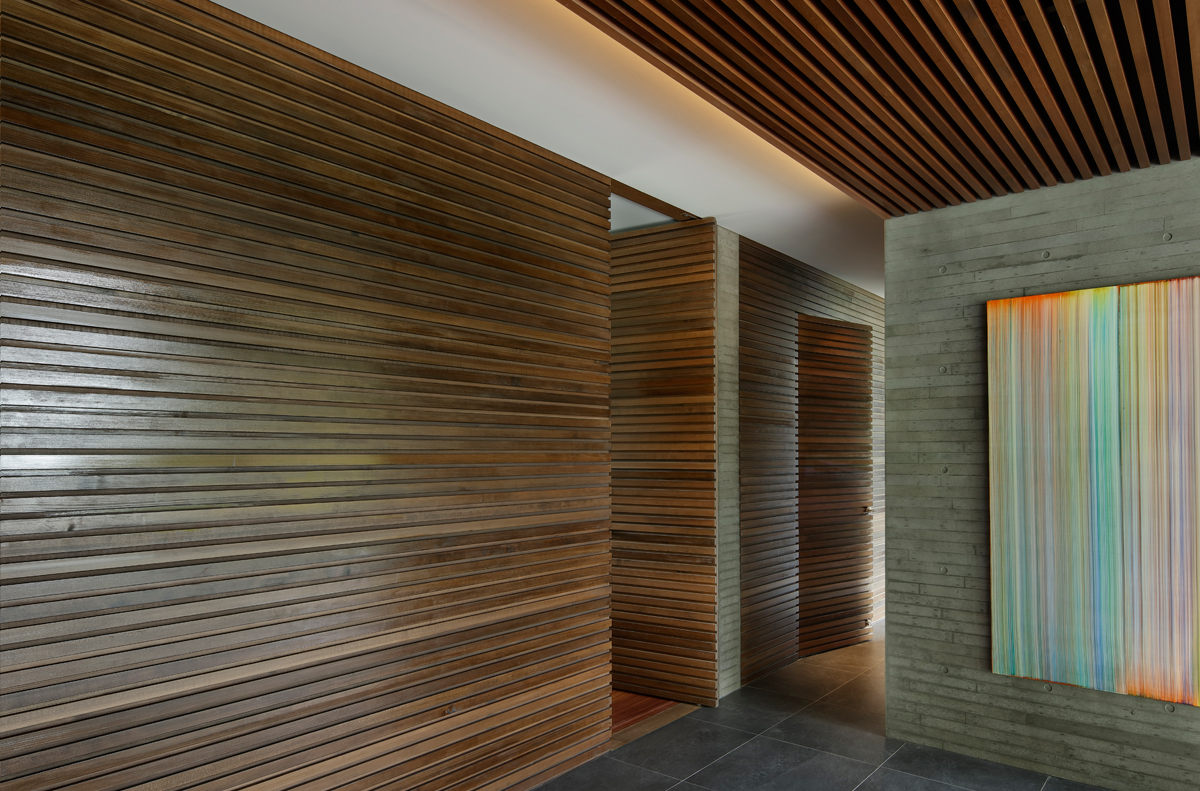
Villa N
Built in a summer resort in Nagano Prefecture, this weekend residence stands on top of a vast small hill with a magnificent view of Mt. Asama to the north. The site is large enough, and the distance from the public road running on the east side to the center of that site is long enough, a 130-meter pull-off road was created for introduction from the gate to the west side, and a flow line was designed to lead from its terminus to the building itself. The building is basically a one-story building, and is extended in the east-west direction, but the west end of the building is on a sloping terrain, so that part of the building is a two-story, taking advantage of the difference in elevation of the land.
CONTAINER STRUCTURE SYSTEM
The Container Structure System (CSS), created by architect Satoshi Okada in 2005, was applied to the building design. The essence of this system is that the building is mainly composed of two elements: the multiple "structural cores" and the "free space" that connects them.
In the former, multiple cores are arranged in a balanced manner based on the planning of both spatial arrangement and structural endurance, and they themselves function as a structure for the whole building. These cores, as containers, contain spatial functions which are relatively not preferable to expose to the public eyes (called "secondary space"). The latter, on the other, is a transparent space defined by glass walls, with interconnecting spatial functions arranged around each core (called the "primary space"). The space, which is basically comprised of glass walls and structural slabs, is characterized by the fact that multiple adjacent cores are structurally integrated with their slabs, thereby eliminating any structural columns.
The Container Structure System was more or less applied to several practices for about 20 years, this building is the first example of its application to a reinforced concrete structure. The building consists of six cores. Each core contains, for example, toilet, storage, pantry, laundry, small bath attached to the bedroom, service staircase, elevator, and mechanical room. Between the container cores, there are open spaces of a public nature for family and guest gatherings, such as the living and dining/kitchen, as appropriate
BUILDING DESIGN
From the terminus of the pulled-off introduction road, a large exterior staircase leads up to a large entry terrace at the upper floor level, from which there is a main entrance with a 2.1 meter-ceiling height that is compressed in scale. At the entrance lobby with its low ceilings, turn left and open a larger door to enter the living with 3.2 meters high ceiling. The space is designed so that the magnificent view of Mt. Asama is reflected in the eye like a folding screen painting.
The kitchen/dining area is located on the diagonal from the living space. The floor level is 80 cm higher than the living, but the ceiling is continuous on the same plane, so the experiential ceiling height varies from 3.2 m to 2.4 m. A deep eave and a large terrace surround outside the dining/kitchen, and the outdoor living is particularly planned on the east side facing the large and distant garden. The glass walls that define this area are all designed as sliding doors, so that when they are opened, the boundary between the interior and exterior disappears, and the space becomes a cohesive whole. The area extending east from the hallway adjacent to the dining area is lined with private bedrooms, and the home office is located at the quietest place at the end of the hallway.
Two guest rooms are placed on the lower floor of the entrance porch, and a large tatami room for a large family to stay on the same floor. The entrance for guests is located at the recess by the garage so that they do not have to use the entrance on the upper floor. On this guest floor, a large bath and sauna are planned to face Mt. Asama for the enjoyment of both guests and the owner's family. The glass walls at the corner facing the magnificent view of the mountain can be pulled into sides and opened wide, allowing guests to enjoy the feeling of a semi-open-air bath while enjoying the air of being one with the outdoors.
The owner's private garage can park two cars. Behind this garage is a sub-entrance, which is directly connected to the elevator. This makes it possible to carry even heavy goods brought in from car to the kitchen/dining and bedroom realm by the shortest route.
LANDSCAPE DESIGN
In this project, Satoshi Okada also designed the landscape in relation with architectural design. The landscape design began with the cultivation of a new 130-meter introduction road due to the large distance from the public road to the building site. The introduction road starts at a gate near the boundary of the public road and gently climbs up to a small hill, gradually descending from halfway up to a carport for guests at the end of the road. The road surface is preferable not be the same level as the garden that runs from the interior of the building, so it has a vertical difference ranged from 1.2 to 2.0 meters below the garden surface. A series of stone walls were made along the road as a retaining wall, and these walls were continued around the garden to the garage.
On the northwest side of the site, where the view of Mt. Asama can be enjoyed, a small garden was designed just in front of the bath and tatami-room, so that the landscape would be continuous from the trees in the near view to the mountain in the far view, an application of “shakkei” method, a traditional tactics of gardening in Japan.
- LOCATION
- Nagano, JP
- PROGRAM
- Private residence
- YEAR
- 2023
- SIZE
- 677.57 sqm
- STRUCTURE
- Reinforced concrete, steel
- LEAD ARCHITECT
- Satoshi Okada
- TEAM
- Tatsuya Terada, Rukia Matsui, Lisa Tomiyama
- COLLABORATORS
-
- STRUCTURAL DESIGN:
- Hojo Structural Laboratory
- MECHANICAL DESIGN:
- Yamazaki Denko Corp, Taisei Corp.
- LIGHTING DESIGN:
- KOIZUMI Lighting Technology Corp.
- LANDSCAPE DESIGN:
- Satoshi Okada + Hakone Ueki Corp.
- CONTRACTOR:
- SASAZAWA Construction Corp.
- PHOTO CREDITS:
- Satoshi Shigeta
- PUBLICATIONS
- Modern Living 273










